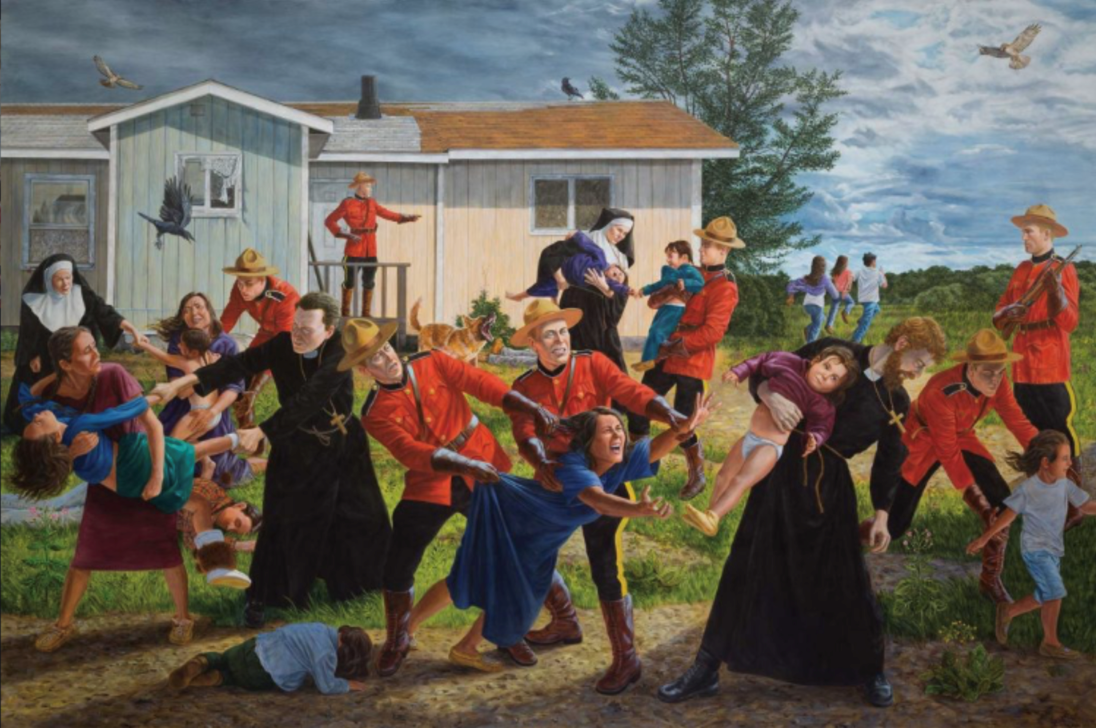The arrival of European settlers in Canada forever changed the land and the lives of its Indigenous inhabitants. For many Indigenous people, the hurt and grievances experienced are still fresh in their memory, and often still ongoing. Addressing these painful questions is sometimes difficult to explain using words.
On September 26, Cree interdisciplinary artist Kent Monkman will provide the opportunity to learn about this complicated history. Monkman will be hosting a virtual talk to explore the last 150 years of Canada’s Indigenous history through art in his exhibit Shame and Prejudice: A Story of Resilience. The talk is presented by the Museum of Anthropology at the University of British Columbia.
As an Indigenous person I think it is quite obvious that Canada 150 represents 150 years of genocide, trauma, colonization, and isolation, and yet this was a year that was widely celebrated with enthusiastic pride and admiration from coast to coast.
Through his artwork, Monkman explores themes present across Indigenous culture including sexuality, loss, and resilience, and inserts them into scenes of historical colonial power. Monkman’s works often involve taking a familiar scene centred around white leaders and dignitaries and shifts the focus towards an Indigenous perspective or power dynamic.
Monkman’s alter-ego, Miss Chief Eagle Testickle, regularly makes an appearance to reclaim the colonial gaze.
In his latest exhibit, Monkman demonstrates the uneasy march towards reconciliation in Canada.
Treasurer and Acting Co-President of the Aboriginal Students’ Association at York (ASAY) Rachelle Naomi Beswick, highlights the rift and changes in reconciliation within Canada.
“As an Indigenous person I think it is quite obvious that Canada 150 represents 150 years of genocide, trauma, colonization, and isolation, and yet this was a year that was widely celebrated with enthusiastic pride and admiration from coast to coast,” Beswick says.
I will always remember ‘The Scream.’ The mounties, priests, and nuns enter the community to forcefully take the children off to residential school. Personally, this hits close to home for me as my father and grandfather are residential school survivors.
However, “the narrative of feigned ignorance is slowly transforming in that audiences are more critical and are beginning to question, fact check, and educate themselves,” Beswick adds.
Monkman’s work also tackles difficult subjects, such as in his painting “The Scream,” depicting the RCMP and Catholic Church taking Indigenous children away from their communities. This painting acknowledges a hard truth and gives voice to the trauma experienced by many Indigenous people.
Coordinator for Aborignial Student Services at York, Randy Pitawanakwat, describes the painting.
“I will always remember the painting entitled ‘The Scream.’ The mounties, priests, and nuns enter the community to forcefully take the children off to residential school. Personally, this hits close to home for me as my father and grandfather are residential school survivors,” Pitawanakwat says.
The pain shown in this painting is difficult to observe, but as Pitawanakwat explains, it is important. “Reconciliation is about building relations between cultures and Monkman’s art does this. This can be a real eye-opening experience to some, but it begins the conversation.”


